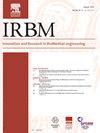Leveraging Action Unit Derivatives for Early-Stage Parkinson's Disease Detection
IF 4.2
4区 医学
Q1 ENGINEERING, BIOMEDICAL
引用次数: 0
Abstract
Objective
Hypomimia is a symptom of Parkinson's disease (PD), involving a decrease in facial movements and a loss of emotional expressions on the face. The objective of this study is to identify hypomimia in individuals in the early stage of PD by analyzing facial action units (AUs).
Methods
Our study included video recordings from 109 PD subjects and 45 healthy control (HC) subjects with an average of two videos per person (294 videos in total). The participants were requested to perform rapid syllable repetitions. For the purpose of discriminating between normal facial muscle movements and those specific to PD subjects experiencing hypomimia, we calculate the derivatives of the AUs. We derive global features based on the AUs intensities and their derivatives, and utilize XGBoost and Random Forest to perform the classification between PD and HC.
Results
We achieve subject-level classification scores of up to 73.7% for balanced accuracy (BA) and an area under the curve (AUC) of 81.39% using XGBoost, and a BA of 79.1% and an AUC of 83.7% with Random Forest. These findings show potential in identifying hypomimia during the early phases of PD. Moreover, this research could facilitate the continuous monitoring of hypomimia beyond hospital settings, enabled by telemedicine.

利用行动单元衍生工具检测早期帕金森病
目的低贫血症是帕金森病(PD)的一种症状,包括面部运动减少和面部情绪表达的丧失。本研究的目的是通过分析面部动作单位(AUs)来识别早期PD患者的低贫血症。方法选取109名PD患者和45名健康对照(HC)患者的录像资料,平均每人2段,共294段。参与者被要求快速重复音节。为了区分正常的面部肌肉运动和那些特定的PD受试者经历低贫血症,我们计算了AUs的导数。我们基于AUs强度及其导数推导出全局特征,并利用XGBoost和Random Forest对PD和HC进行分类。结果使用XGBoost获得的学科水平分类分数的平衡精度(BA)和曲线下面积(AUC)分别为73.7%和81.39%,使用Random Forest获得的BA和AUC分别为79.1%和83.7%。这些发现显示了在PD早期阶段识别低血氧症的潜力。此外,通过远程医疗,这项研究可以促进在医院之外对低贫血症的持续监测。
本文章由计算机程序翻译,如有差异,请以英文原文为准。
求助全文
约1分钟内获得全文
求助全文
来源期刊

Irbm
ENGINEERING, BIOMEDICAL-
CiteScore
10.30
自引率
4.20%
发文量
81
审稿时长
57 days
期刊介绍:
IRBM is the journal of the AGBM (Alliance for engineering in Biology an Medicine / Alliance pour le génie biologique et médical) and the SFGBM (BioMedical Engineering French Society / Société française de génie biologique médical) and the AFIB (French Association of Biomedical Engineers / Association française des ingénieurs biomédicaux).
As a vehicle of information and knowledge in the field of biomedical technologies, IRBM is devoted to fundamental as well as clinical research. Biomedical engineering and use of new technologies are the cornerstones of IRBM, providing authors and users with the latest information. Its six issues per year propose reviews (state-of-the-art and current knowledge), original articles directed at fundamental research and articles focusing on biomedical engineering. All articles are submitted to peer reviewers acting as guarantors for IRBM''s scientific and medical content. The field covered by IRBM includes all the discipline of Biomedical engineering. Thereby, the type of papers published include those that cover the technological and methodological development in:
-Physiological and Biological Signal processing (EEG, MEG, ECG…)-
Medical Image processing-
Biomechanics-
Biomaterials-
Medical Physics-
Biophysics-
Physiological and Biological Sensors-
Information technologies in healthcare-
Disability research-
Computational physiology-
…
 求助内容:
求助内容: 应助结果提醒方式:
应助结果提醒方式:


